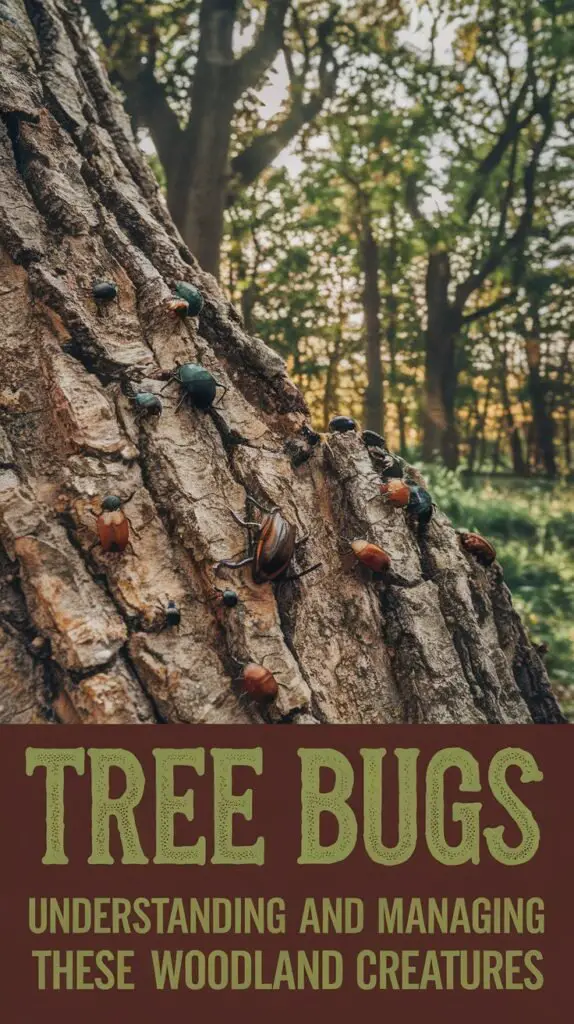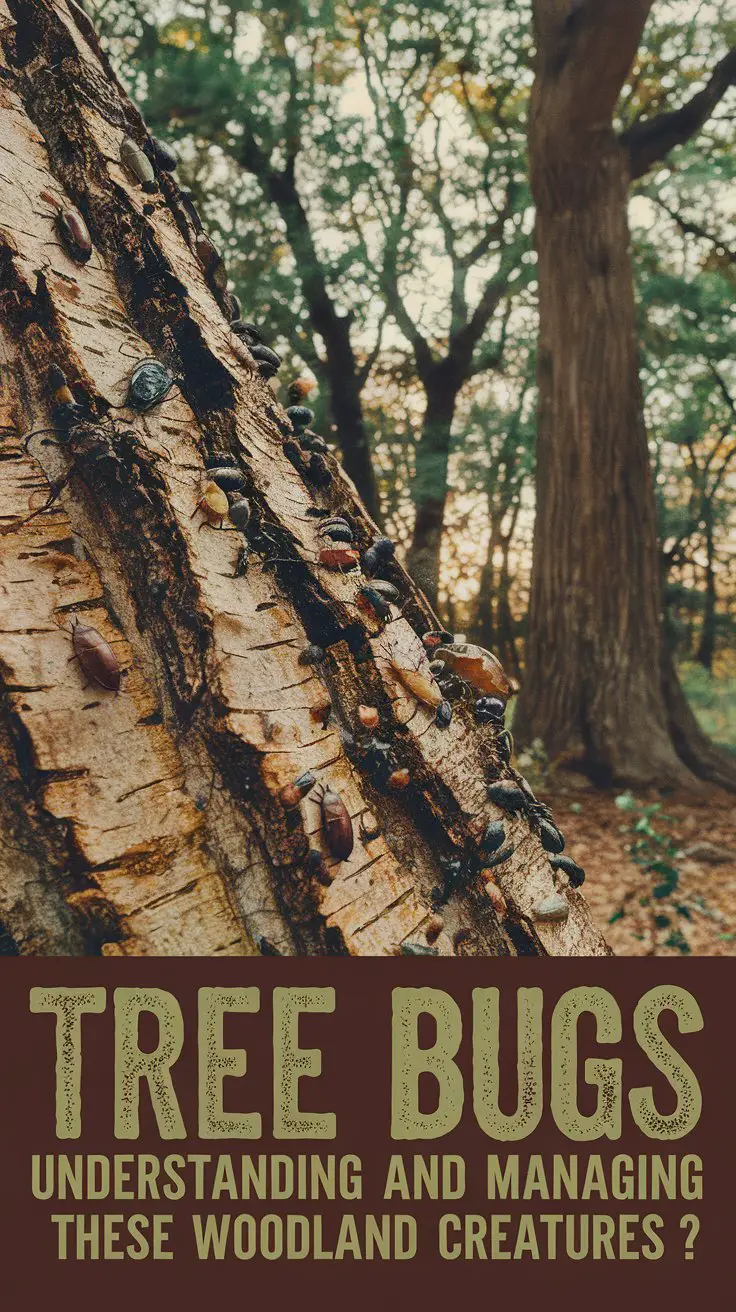Explore the world of Tree bugs in 2024. Learn to identify common species, understand their ecological roles, and discover effective, eco-friendly management techniques for healthy trees.
Tree bugs, encompassing a wide variety of insects that live on and feed from trees, play crucial roles in forest ecosystems. While some are beneficial, others can cause significant damage to trees. Proper identification and management of tree bugs are essential for maintaining healthy trees in urban, suburban, and forest environments. This guide provides up-to-date information on common tree bugs, their impact, and effective control methods for 2024.

Hello, I’m Ashley Scott, an entomologist and forest health specialist with over 15 years of experience in insect-plant interactions. Today, I’m excited to share my knowledge about tree bugs, a topic of growing importance as we face changing climates and evolving forest management practices.
Understanding Tree Bugs
Tree bugs, or arboreal insects, are a diverse group that includes both pests and beneficial insects. They can be broadly categorized into:
- Leaf-feeders
- Wood-borers
- Sap-suckers
- Predatory insects
Each group has different impacts on tree health and requires specific management approaches.
Common Tree Bugs in 2024
1. Emerald Ash Borer (Agrilus planipennis)
This invasive wood-boring beetle continues to be a major concern for ash trees. The USDA’s Emerald Ash Borer Information page provides crucial updates on its spread and control measures.
2. Hemlock Woolly Adelgid (Adelges tsugae)
An invasive sap-sucking insect threatening hemlock forests. It’s one of the most destructive tree pests in eastern forests, requiring ongoing monitoring and management.
3. Asian Longhorned Beetle (Anoplophora glabripennis)
Another invasive wood-borer affecting hardwood trees. Early detection is crucial for controlling its spread.
4. Gypsy Moth (Lymantria dispar)
A persistent leaf-feeding pest that can defoliate large areas of forest. New biological control methods are showing promise in managing outbreaks.
5. Bark Beetles
Various species of bark beetles continue to pose threats, especially in coniferous forests stressed by drought or climate change.
Ecological Roles of Tree Bugs
Not all tree bugs are pests. Many play vital roles in forest ecosystems:
- Pollinators: Some tree bugs, like certain beetles, act as important pollinators for trees and other plants.
- Decomposers: Many insects help break down dead wood, recycling nutrients back into the ecosystem.
- Prey: Tree bugs serve as a food source for birds, bats, and other wildlife, supporting biodiversity.
- Predators: Some tree bugs prey on harmful pests, providing natural pest control in forests.
Understanding these roles is crucial for sustainable forest management and urban tree care.
Identifying Tree Bug Damage
Recognizing signs of tree bug infestation is key to early intervention. Common symptoms include:
- Leaf discoloration or defoliation
- Holes in bark or leaves
- Sawdust-like frass at the base of trees
- Canopy dieback
- Presence of egg masses or cocoons
The US Forest Service’s Field Guide is an excellent resource for identifying specific tree bug damage.
Innovative Management Techniques for 2024
1. Pheromone Traps
Advanced pheromone traps are now more species-specific, allowing for targeted monitoring and control of tree pests.
2. Biological Control
New strains of beneficial nematodes and fungi are being developed to combat wood-boring insects more effectively.
3. Drone Technology
Drones equipped with hyperspectral cameras can now detect early signs of infestation, allowing for prompt intervention.
4. Tree Injection Systems
Improved systemic insecticides and delivery methods provide longer-lasting protection with minimal environmental impact.
5. Climate-Adaptive Tree Selection
Choosing tree species resistant to prevalent pests in your area can reduce the need for intensive pest management.
Eco-Friendly Control Methods
As we become more environmentally conscious, eco-friendly pest control methods are gaining popularity:
- Encourage Natural Predators: Plant diverse, native species to attract birds and beneficial insects that prey on tree bugs.
- Proper Tree Care: Well-maintained trees are more resistant to pest infestations. Regular pruning, watering, and fertilization can boost tree health.
- Organic Insecticides: Neem oil and insecticidal soaps can be effective against many tree bugs while being safer for the environment.
- Physical Barriers: For certain pests, physical barriers like tree bands can prevent infestation without chemicals.
- Integrated Pest Management (IPM): This holistic approach combines various control methods to manage pests effectively while minimizing environmental impact.
The Role of Citizen Science in Tree Bug Management
Citizen science projects are becoming increasingly important in monitoring and managing tree bugs. Apps like iNaturalist allow the public to report sightings of tree bugs and damage, contributing valuable data to researchers and forest managers.
Climate Change and Tree Bugs
Climate change is altering the distribution and life cycles of many tree bugs. Some pests are expanding their ranges, while others are experiencing population booms due to milder winters. Staying informed about these changes is crucial for effective long-term forest management.
Conclusion
Understanding and managing tree bugs is an ongoing challenge that requires adaptability and collaboration between scientists, forest managers, and the public. By staying informed about the latest research and management techniques, we can better protect our trees and forests from harmful pests while preserving the ecological balance that beneficial insects provide.
Remember, healthy forests depend on a complex interplay of organisms, including tree bugs. Our goal should be to manage harmful pests while preserving the overall biodiversity and health of our woodland ecosystems.
For more gardening tips and plant care guides, visit usagardenhub.com

